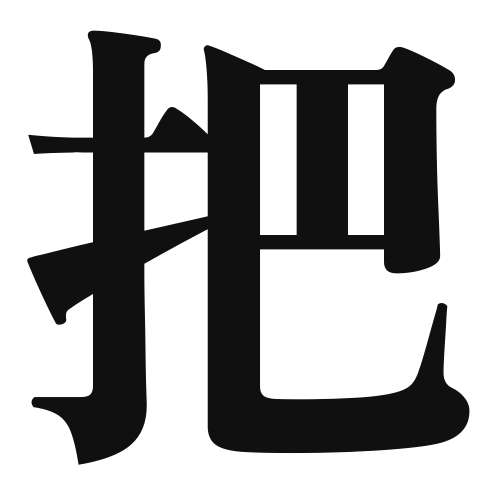1. Overview of Meaning
The kanji “把” (pronounced “ha” or “ba”) generally means “to grasp,” “to hold,” or “to take.” It conveys the idea of physically or metaphorically holding something firmly.
2. Formation and Radical
Formation of the Kanji: The kanji “把” is a compound character (会意文字) that combines elements to convey its meaning. It consists of the radical “扌” (hand) and the character “把,” which relates to holding or grasping.
Radical: The radical of “把” is “扌,” which is a variant of “手” (hand) and indicates actions related to the hand.
3. Examples of Usage
Common Words and Phrases: Some common words that include “把” are “把握” (hakko – to grasp or seize) and “把持” (bachi – to hold or control).
Example Sentences in Daily Conversation:
- この問題をしっかりと把握する必要があります。 (We need to grasp this issue firmly.)
- 彼はそのチャンスをしっかりと把持した。 (He firmly held onto that opportunity.)
4. Synonyms and Antonyms
Similar Kanji: A similar kanji is “持” (mochi), which also means “to hold” but is more focused on possession rather than the act of grasping.
Antonyms: An antonym of “把” could be “放” (hō), which means “to release” or “to let go,” indicating the opposite action of holding.
5. Cultural and Historical Background
Relation to Japanese Culture: The concept of “把” is significant in various aspects of Japanese culture, especially in martial arts, where the ability to grasp and control is essential.
Proverbs and Idioms: One common idiom is “把握する” (haku suru), which means “to grasp” in a figurative sense, often used in contexts of understanding or seizing opportunities.
